Abstract
An objective comparison of Eastern and Western approaches to medicine is necessary to further evaluate the validity of Oriental medical techniques such as acupuncture. The development of medicine in Western nations follows the way of hypothetical deduction and the Eastern approach uses the inductive method. The Western approach clearly divides the health from the disease, yet the Eastern approach considers health as a balanced state versus disease as an unbalanced state. The Western approach tends to change the environment and the Eastern way is to prefer to adapt to the environment. There are numerous difficulties in comparing these two approaches. The same terminology may apply to entirely different facts, the teaching and learning methods are quite different, and the evaluation of the treatment is almost not comparable.
In order to help understand the Eastern approach better, an understanding is needed of the basic Chinese concepts: the concept of a small universe living in a large universe; the duality concept of yin and yang; the concept of anatomy; the concept of physiology in Chinese medicine—the state of equilibrium expressed by the five elements; the concept of pathophysiology expressed by the external and internal insults; the concept of maintaining and promoting health expressed by the circulation of chi and hsieh; the therapeutic concept in Chinese medicine—the normalization or reestablishment of balance of the body function; the concept of preventive medicine.
Full text
PDF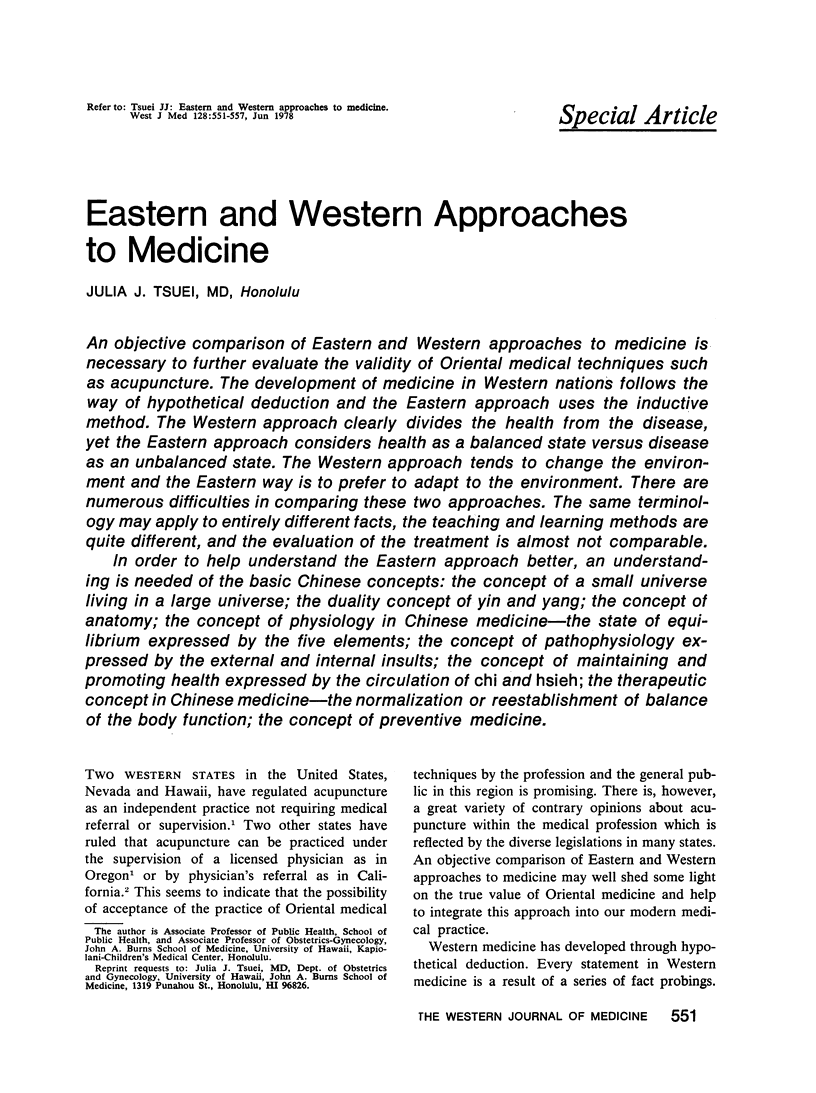
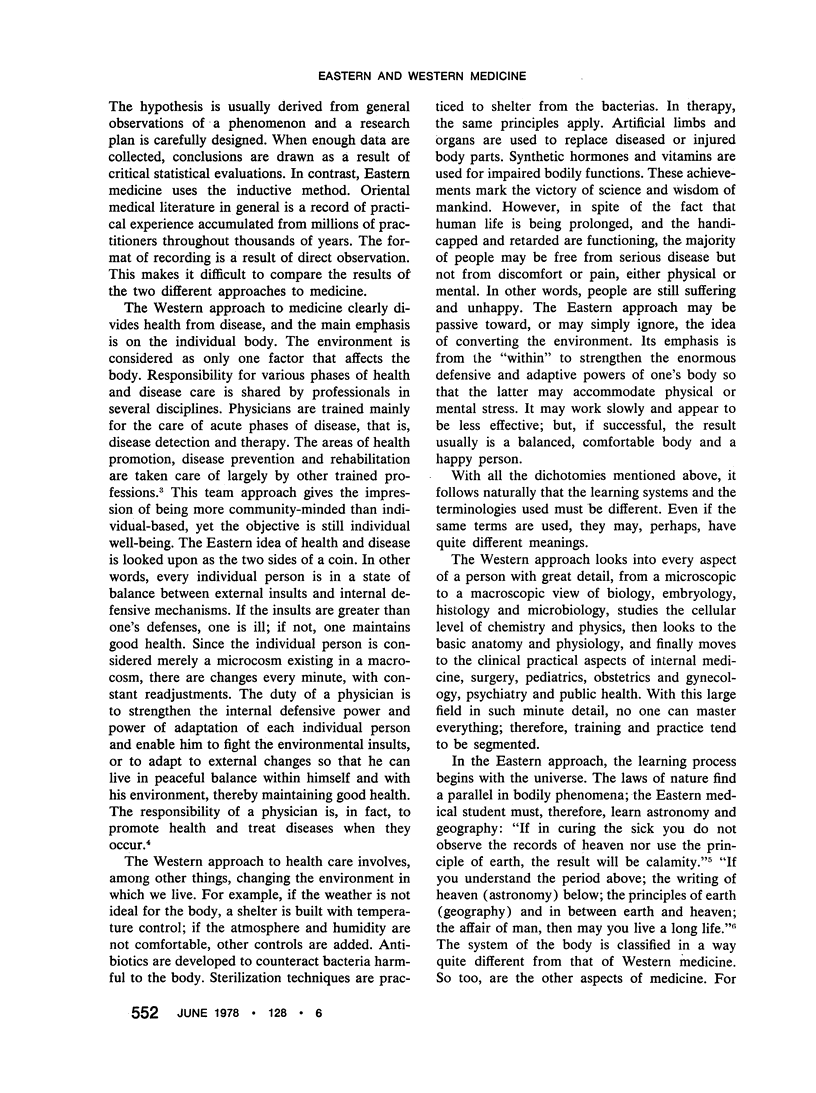
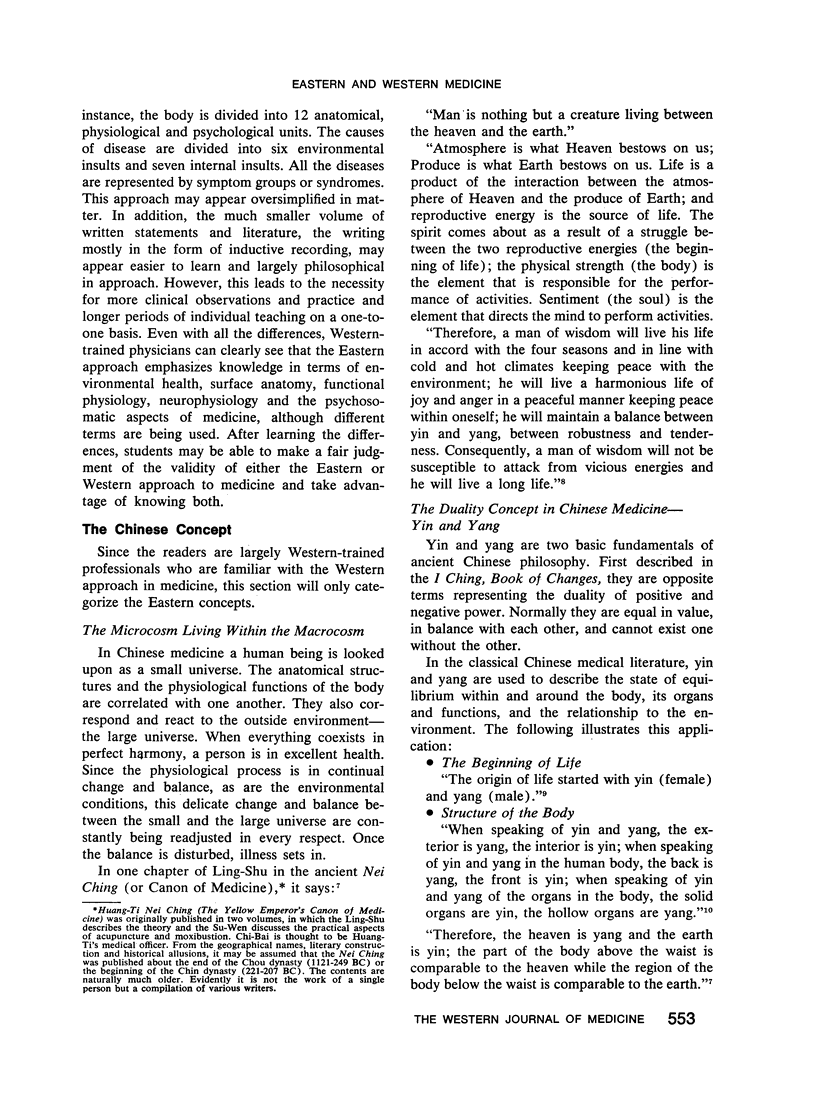
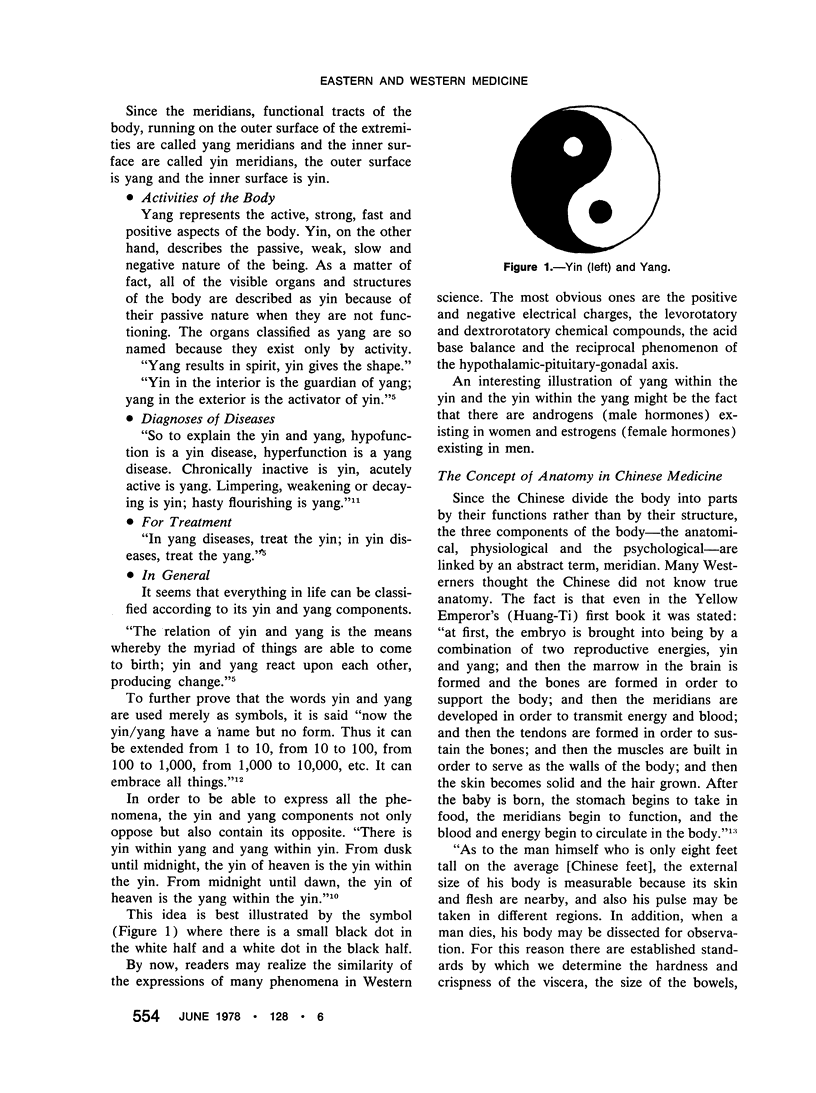
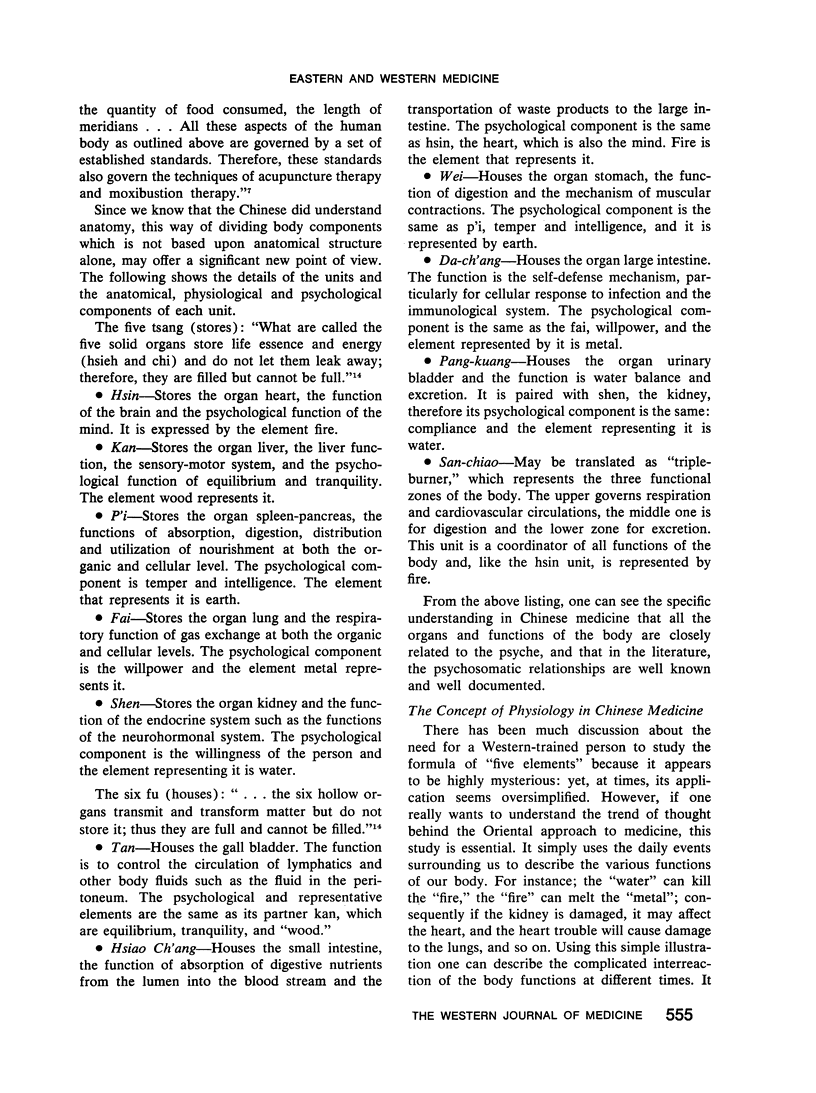
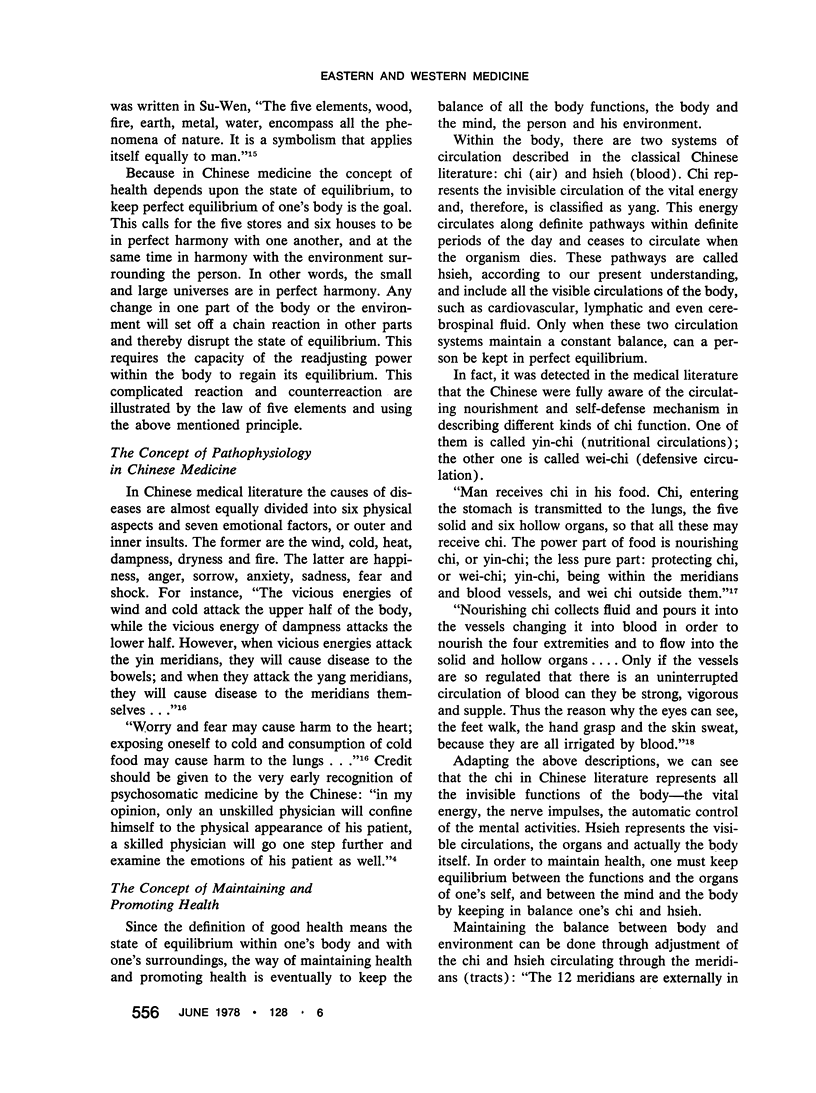
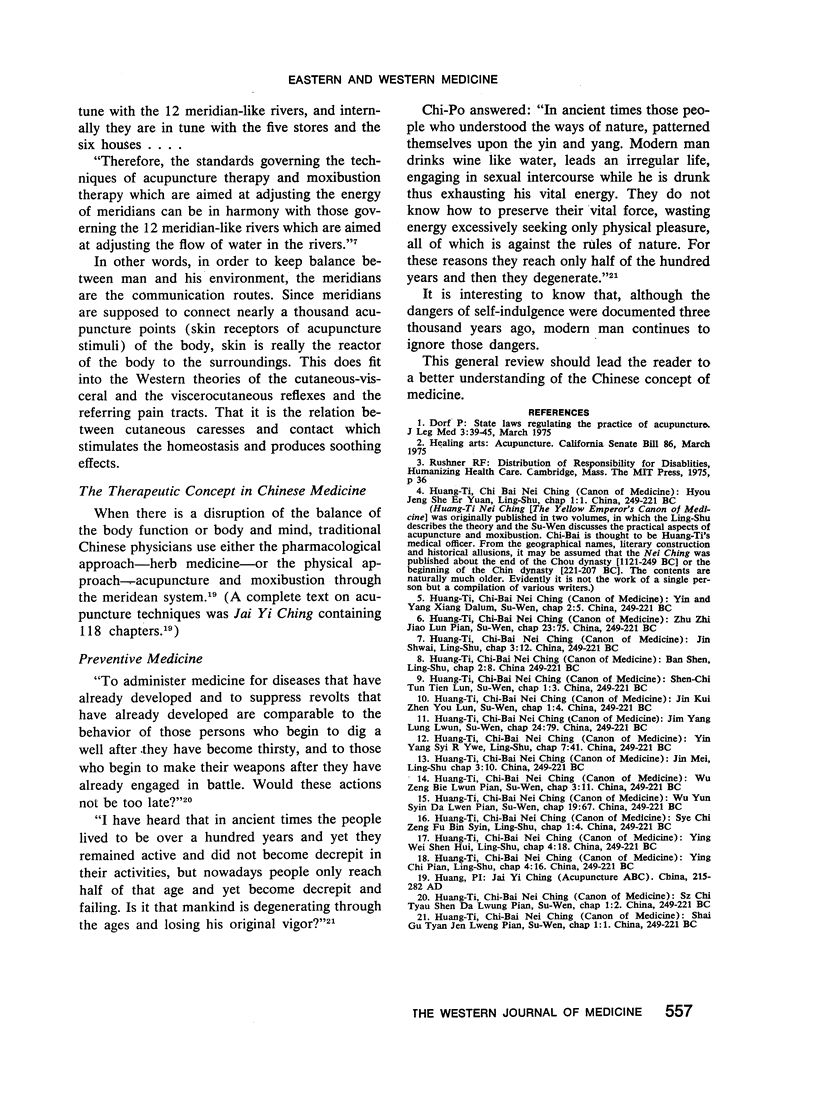
Selected References
These references are in PubMed. This may not be the complete list of references from this article.
- Dorf P. A. State laws regulating the practice of acupuncture. J Leg Med (N Y) 1975 Mar;3(3):39–45. [PubMed] [Google Scholar]


